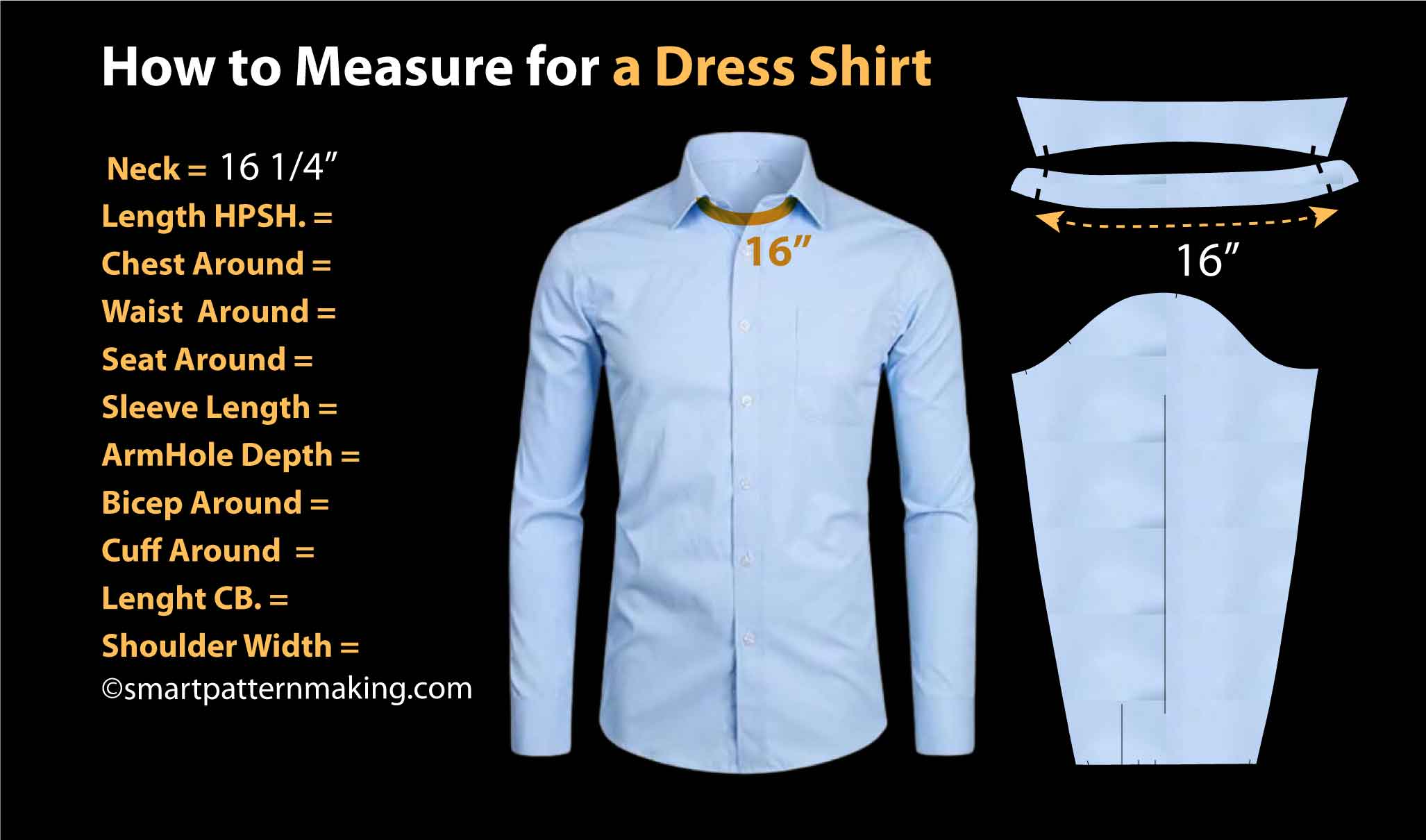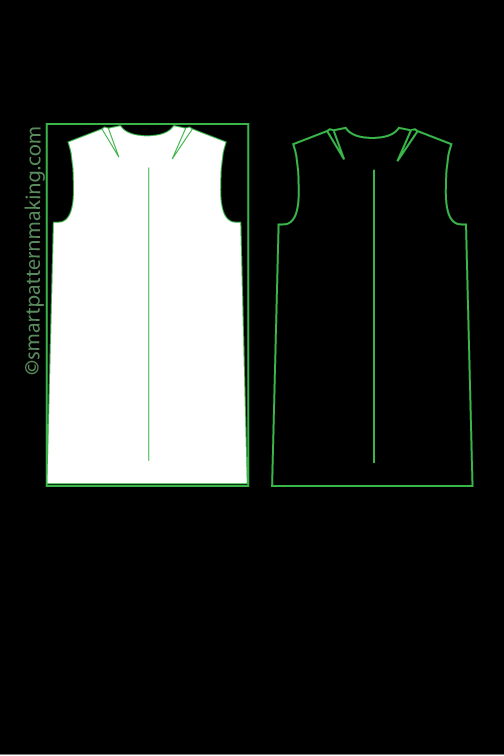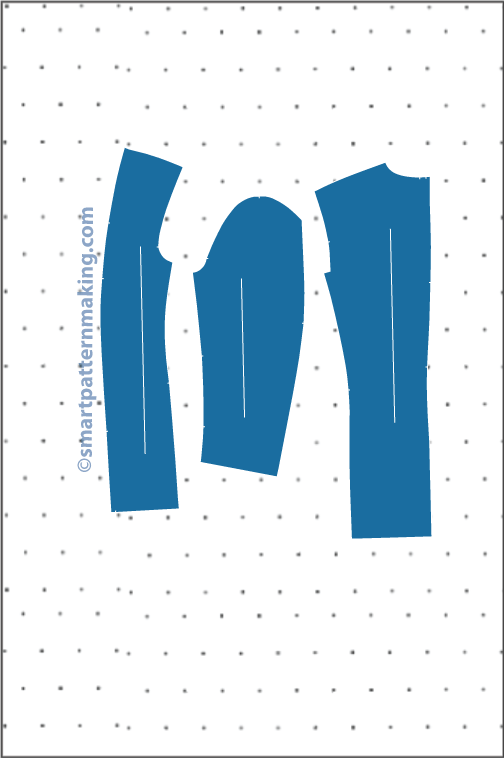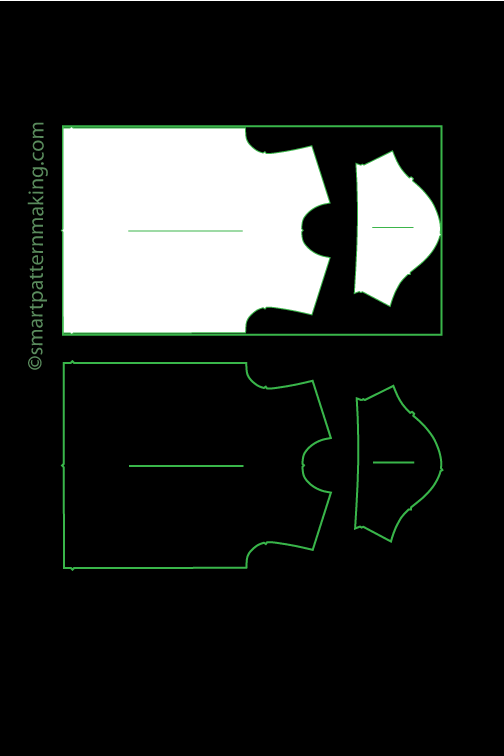Introduction
Getting the perfect fit for a dress shirt is essential to both comfort and style. Whether you're shopping for a new shirt or customizing one to your exact specifications, knowing how to take accurate measurements is crucial. This comprehensive guide will walk you through the steps of measuring each part of your body to ensure that your dress shirt fits like it was made just for you.
"Design your custom dress shirt patterns, transform them into digital files, adjust their size, convert to DXF format, and produce your prints today!"
How to Measure Neck for Shirt
Neck measurement is the first and most essential step in shirt sizing for men. To ensure your dress shirt fits comfortably around your neck:
- Wrap a measuring tape around the base of your neck, where your collar would naturally sit. Make sure the tape is snug but not too tight, allowing you to fit one finger between the tape and your neck.
- Record the neck measurement where the tape meets, rounding up to the nearest 1/4 inch if necessary. For example, a typical neck measurement might be 16 inches.
- Measure twice to ensure accuracy. A precise neck measurement will help in getting the right shirt sizing for men.
Understanding your collar size is crucial to comfort and style, ensuring that your shirt fits well and complements your overall look.
Pro Tip: If you like a bit more room around your neck, consider adding 1/4 inch to your final measurement to ensure your collar feels comfortable throughout the day.
 How to Measure a Shirt’s Length
How to Measure a Shirt’s Length
Knowing how to accurately measure a shirt’s length from the high point shoulder (HPSH) to the hem is vital for shirt sizing for men:
- Start by placing the measuring tape at the highest point of the shoulder, where the shoulder seam meets the collar seam. This is crucial in how to measure shirt dimensions.
- Measure straight down the front of the shirt to the bottom hem. Ensure that the shirt is laid flat and smooth, without wrinkles that could distort the measurement.
- Measure twice to confirm the shirt length is accurate. For instance, your shirt length might be 33 inches from the HPSH to the hem.
Understanding how to measure shirt dimensions will ensure that your shirt isn’t too short or too long, providing the perfect fit whether tucked or untucked.
Pro Tip: If you prefer to wear your shirts untucked, consider shortening the length by 1/2 to 1 inch to achieve a neater look.

How to Measure Dress Shirt Chest
To achieve the perfect fit, it's essential to know how to measure chest size:
- Stand relaxed with your arms at your sides. Wrap the measuring tape around the fullest part of your chest, usually across the nipples. This is critical in how to measure chest width.
- Ensure the tape is level all the way around, snug but not tight. The tape should sit flat against your skin without squeezing.
- Record the chest measurement at the point where the tape meets. Measure twice to ensure accuracy. For example, a common chest measurement is 44 inches around.
Knowing how to measure chest size accurately is vital in shirt sizing for men. An accurate chest measurement ensures your dress shirt isn’t too tight or too loose, providing both comfort and style.
Pro Tip: When measuring your chest, take a deep breath and hold it before recording the measurement. This ensures the shirt won't feel tight when you move or breathe deeply

How to Measure Waist for Shirt
Proper waist measurement is crucial for a well-fitting dress shirt, especially in shirt sizing for men:
- Wrap the measuring tape around the narrowest part of your waist, typically just above the belly button. Knowing how to measure waist circumference accurately is key.
- Stand naturally, without sucking in your stomach, to get the most accurate waist measurement. Make sure the tape is snug but not squeezing.
- Record the measurement where the tape meets. Measure twice to ensure accuracy. A typical waist measurement might be around 36 inches.
Understanding how to measure waist circumference is essential for achieving the right waist measurement for your dress shirt. This ensures the shirt fits well around your midsection without being too tight or too loose.
Pro Tip: If you have a bit of a belly, measure around the fullest part of your midsection instead of the narrowest part to ensure the shirt fits comfortably.
"Design your custom dress shirt patterns, transform them into digital files, adjust their size, convert to DXF format, and produce your prints today!"

How to Measure Seat for Shirt
Accurate seat measurement is essential for ensuring the shirt fits well around your hips, especially in shirt sizing for men:
- Wrap the measuring tape around the fullest part of your hips and buttocks. This is crucial in learning how to measure shirt dimensions.
- Ensure the tape is level and parallel to the floor. The tape should be snug but not tight, allowing for a bit of movement.
- Record the seat measurement where the tape meets. Measure twice to confirm accuracy. For example, a typical seat measurement might be 44 inches around.
Understanding how to measure shirt dimensions will help you get the right fit, ensuring your dress shirt isn’t too tight around the hips.
Pro Tip: For a looser fit, add 1 inch to your final seat measurement to ensure the shirt doesn’t pull when you sit down.

How to Measure Shirt Sleeve Length
Getting the correct sleeve length is crucial for the overall fit of your dress shirt:
- Start by measuring from the middle of the back, just below the collar, across the shoulder, and down the arm to the wrist. This is the standard method in how to measure shirt sleeve length. To get an accurate measurement, it's also important to understand how to measure shirt arm length.
- Ensure the tape follows the natural curve of your arm, and keep your arm slightly bent at the elbow. This helps you properly execute how to measure shirt arm length and ensure the sleeve fits perfectly.
- Record the sleeve length and measure twice to ensure it’s accurate. For example, a typical sleeve length might be 35" inches.
Knowing how to measure arm length for shirts is essential for a dress shirt that fits well in the sleeves, avoiding any discomfort or tightness.
Pro Tip: For dress shirts, the sleeve should end right at the wrist bone. If you’re between sizes, opt for the longer length to accommodate any shrinkage after washing.

How to Measure Dress Shirt Armhole
To measure the armhole depth on the body:
- Stand naturally with your arms relaxed at your sides.
- Locate the shoulder point where your shoulder meets the top of your arm.
- Measure vertically from the shoulder point down to the armpit.
- Wrap the tape around the armhole, going under the armpit and back to the shoulder.
- Record the measurement. A typical armhole depth might be around 11 1/2 inches. Measure twice for accuracy.
Pro Tip: Ensure the tape is snug but not tight to allow comfortable movement.

How to Measure Bicep for Shirt
Learn the proper bicep measurement technique for a well-fitting sleeve:
- Wrap the measuring tape around the fullest part of your bicep with your arm relaxed at your side. This step is crucial in shirt sizing for men.
- Make sure the tape is snug but not tight, allowing for some ease.
- Record the bicep measurement where the tape meets. Measure twice to ensure accuracy. A typical bicep measurement might be around 16 inches.
Understanding how to measure arm length for shirts includes accurately measuring the biceps to ensure the sleeves aren’t too tight and allow comfortable movement.
Pro Tip: If you have particularly muscular arms, add 1/4 to 1/2 inch to your final bicep measurement to ensure the sleeves aren’t too tight.

How to Measure Shirt Cuff Size
Use this dress shirt measurement guide for accurate cuff measurements, including angular cuff shapes and center cuff button placement:
- Lay the cuff flat and measure from the center of the button to the outside edge of the buttonhole. This is essential in how to measure shirt dimensions.
- Make sure the cuff is straight and the tape is snug to get the most accurate measurement.
- Record the cuff measurement and measure twice to ensure accuracy. For instance, a typical cuff measurement might be 9 inches around.
Understanding how to measure shirt dimensions for cuffs is crucial to ensure they fit comfortably and allow for easy buttoning, especially if you wear a watch.
Pro Tip: If you wear a watch, measure your wrist with the watch on and add 1/4 inch to your final cuff measurement to ensure a comfortable fit.

How to Measure Shoulder Width
Accurate shoulder width measurement is crucial for ensuring the dress shirt fits well across the shoulders:
- To measure shoulder width, place the measuring tape at the point where one shoulder seam meets the top of the sleeve and measure straight across to the other shoulder. This is essential in how to measure shirt dimensions.
- Record the measurement and measure twice to ensure accuracy. For example, a typical shoulder width measurement might be 18 1/2 inches.
Understanding how to measure chest width also plays a role in how well the shirt fits across the shoulders, ensuring a comfortable and tailored fit.
Pro Tip: If you’re between sizes, choose the larger shoulder width to ensure a comfortable fit, especially when moving your arms.
"Design your custom dress shirt patterns, transform them into digital files, adjust their size, convert to DXF format, and produce your prints today!"

How to Measure CB Length Accurately
Measure from the middle of the back to the hem for accurate center back (CB) length:
- Place the measuring tape at the center of the back, just below the collar, and measure straight down to the hem. This is a critical step in shirt sizing for men.
- Make sure the shirt is laid flat and smooth for the most accurate measurement.
- Record the CB length and measure twice to confirm. For example, a typical CB length might be 30 1/2 inches.
Knowing how to measure for a dress shirt accurately includes understanding the importance of the CB length in how the shirt drapes on your body.
Pro Tip: For shirts you plan to wear untucked, consider shortening the CB length by 1/2 inch for a cleaner look when worn casually.

Conclusion
By following this guide on how to measure for a dress shirt, you'll be well-equipped to achieve a tailored fit that looks great and feels even better. Accurate measurements ensure that your shirt complements your body shape and enhances your overall appearance. So take your time, measure carefully, and enjoy the confidence that comes with wearing a perfectly fitted dress shirt.
-------------------
Ready to take your sustainable fashion ideas to the next level?
Design your custom patterns, transform them into digital files, resize them for the perfect fit, convert to DXF format, and produce your prints effortlessly! Let us help you create eco-friendly garments that look great and respect the planet—get started with us today!
Loved reading this article and found it valuable? If so, show us some love and buy us a coffee! ☕ :)
Developing tools and creating valuable content requires countless hours of work and extensive research—ensuring you have them at your disposal. Additionally, keeping this site ad-free and covering operational expenses demands significant resources.
If our work helps you, please consider supporting us. Your donation allows us to continue providing more valuable tools, fresh content, and the top-notch services you deserve.
Thank you so much for your support!
-------------------













